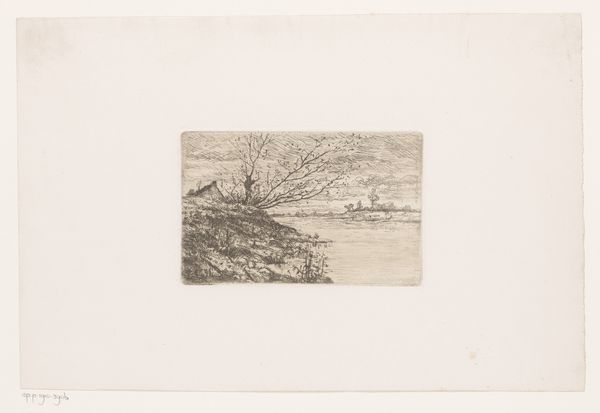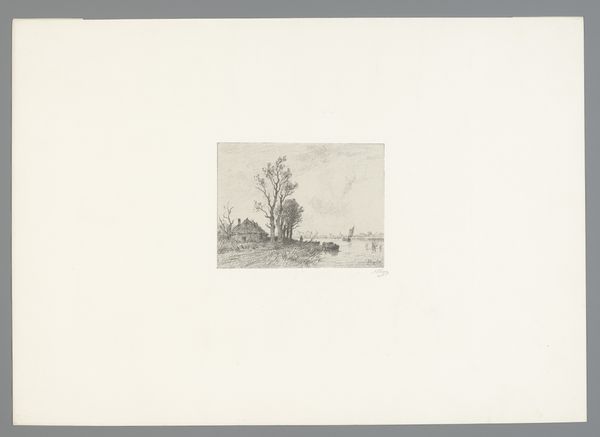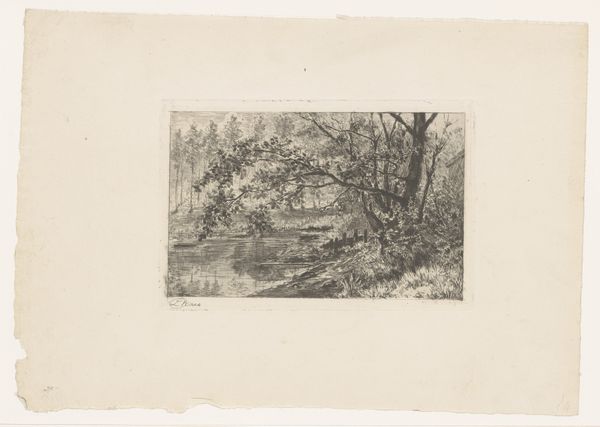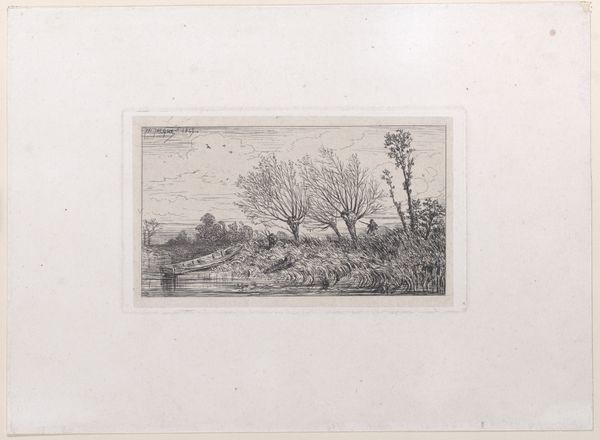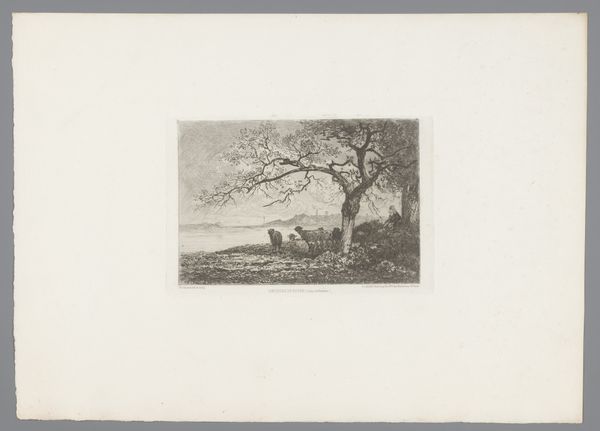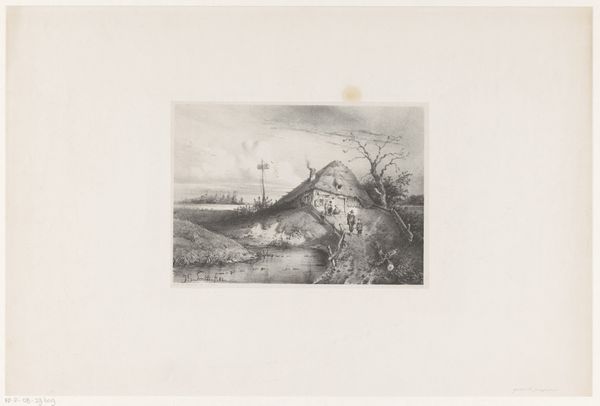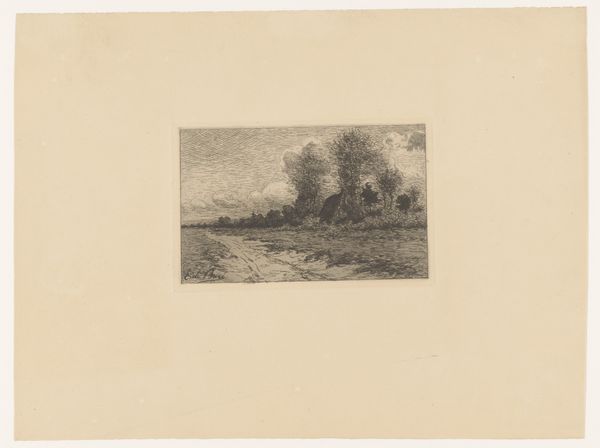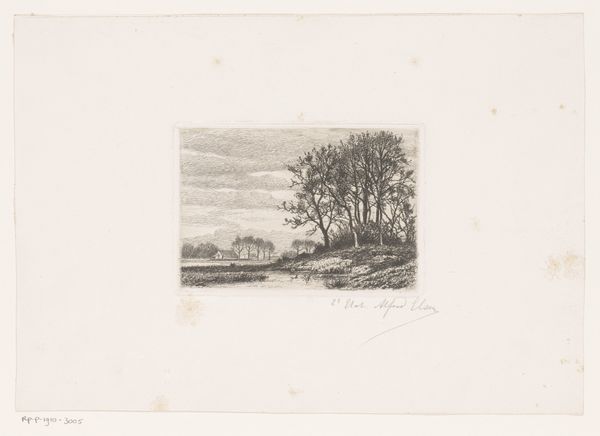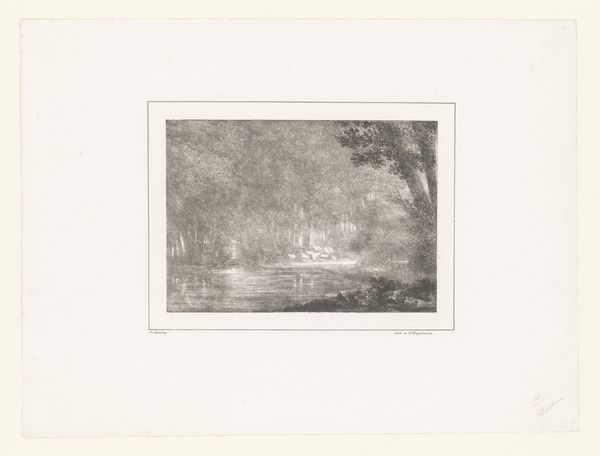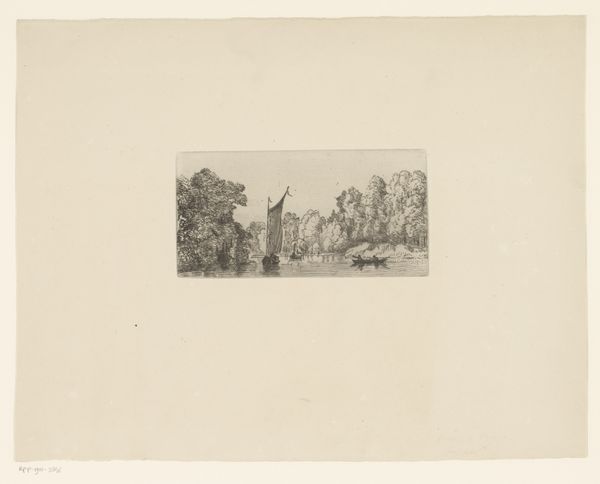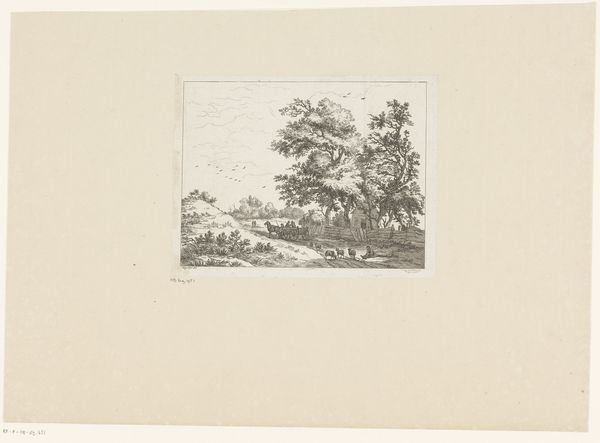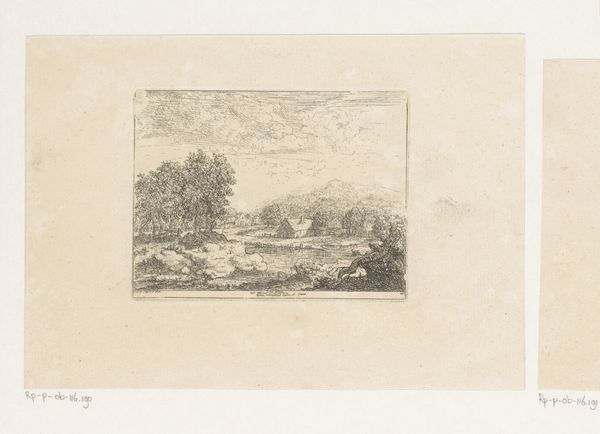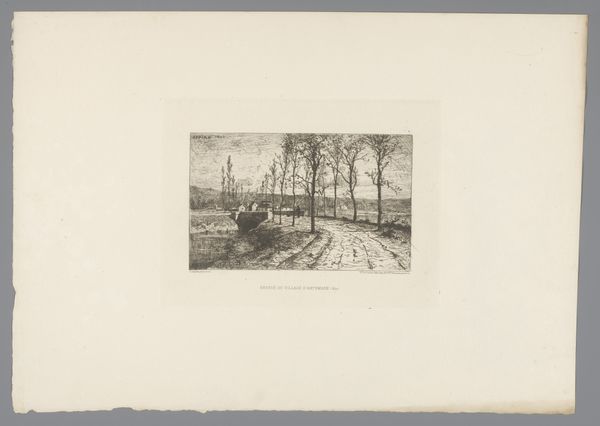
print, etching, woodcut, wood-engraving
# print
#
etching
#
landscape
#
woodcut
#
northern-renaissance
#
wood-engraving
#
realism
Dimensions: 3 3/8 x 5 7/16 in. (8.57 x 13.81 cm) (image)9 1/2 x 12 in. (24.13 x 30.48 cm) (sheet)
Copyright: Public Domain
Editor: Here we have William B. Closson's "Untitled (Spring thaw in moonlight)" from 1883, a print combining etching, woodcut, and wood-engraving techniques. There's a quiet stillness about it; the bare trees and murky water suggest a landscape in transition. What resonates with you when you look at this piece? Curator: What I immediately notice is how Closson uses moonlight, not for romantic illumination, but almost as a stark, revealing force. Look at how it highlights the bare branches. For centuries, trees, particularly those in winter, were symbolic of mortality, but also resilience. Editor: So, the trees represent more than just…trees? Curator: Exactly. Think about the 'memento mori' tradition – reminders of death intended to also celebrate life. The barren landscape could suggest that period of reflection that happens before rebirth. The choice of black and white heightens the sense of austerity. Editor: I see. So, the ‘Spring thaw’ mentioned in the title represents a time between dormancy and renewal? Curator: Precisely! Water often embodies cleansing and potential; it's no accident that many spiritual traditions associate water with purification. What feeling do you have when looking at this water in moonlight? Editor: It's a bit melancholy. But hopeful too. It's interesting how the techniques enhance that feeling. The detail in the clouds above compared to the solid ground feels weighty and yet weightless. Curator: Indeed. Consider how such imagery allows cultural memory to persist. The landscape invites introspection about the cyclical nature of existence. Editor: I see the symbolism woven into this deceptively simple scene. It’s like reading a visual poem. Curator: Absolutely, and each viewer brings their own understanding of the cultural and psychological symbols that speak to them individually. It truly invites one to bring oneself into the space.
Comments
No comments
Be the first to comment and join the conversation on the ultimate creative platform.
